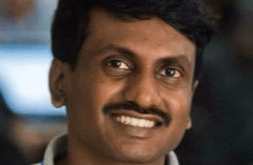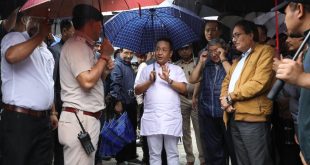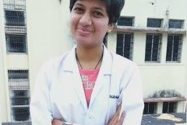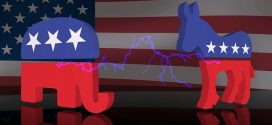Dynamic, dedicated and determined, Narendra Modi became the Prime Minister of India on May 26, 2014. He is the first Prime Minister of the country to be born in an independent India. From the time of assuming office, PM Modi has been working continuously for all-round and inclusive development of India, with the goal to transform the country into a regional and global superpower. The aim is also to achieve social and economic uplift of the citizens so that they can realize their hopes and aspirations. At the core of PM Modi’s inspiration is the concept of ‘Antyodaya’, which seeks to ensure that basic necessities such as food are made available to every citizen including the last person in the queue.
Early Life
Narendra Modi was born in a small town of Vadnagar, Mehsana district, Bombay State (present-day Gujarat) on September 17, 1950. He was the third of six children born to DamodardasMulchand Modi and Heeraben Modi. Having grown up in a poor family, he truly understands the hardships and problems faced by the common people. As a child, he used to sell tea to contribute to his family’s meager income, which made him realize the importance of hard work and dedication. It was due to such upbringing that, from a very young age, Modi developed an inclination towards serving the nation and its people.
Joining the RSS
Narendra Modi always wanted to be with people, to help them and to share their joys and sorrows. He joined the RashtriyaSwayamsevakSangh (RSS), as it provided the right platform to work towards his goal, that of serving the people. He became a full-time pracharak (campaigner) for the RSS after the Indo-Pak war of 1971. During his RSS years, Modi also completed his education. In 1978, he completed a degree in Political Science through a long-distance course from Delhi University. In 1983, he completed his Master’s degree in Political Science from Gujarat University.
Political Career
Modi started his political career when the RSS assigned him to BJP in 1985. He was instrumental in ensuring success of various campaigns of BJP such as L. K. Advani’s 1990 AyodhyaRathYatra and MurliManohar Joshi’s 1991–92 EktaYatra (Journey for Unity). Furthermore, his electoral strategy helped the party win the Gujarat State Assembly Elections in 1995. Thereupon, he was given more prominent leadership roles at the national level.
Chief Minister of Gujarat (2001–14)
Narendra Modi became the Chief Minister of Gujarat for the first time on October 7, 2001. His politicalmaverick and single-minded focus on the development of Gujarat helped him to continue to serve the State as its Chief Minister for four consecutive terms (First Term 2001-2002 | Second Term 2002-2007 | Third term 2007-2012 | Fourth Term 2012-2014).
Modi’s work as the Prime Minister of India
Modi played a pivotal role in charting BJP’s electoral strategy for the 2014 General Elections. He contested from 2 constituencies – Varanasi and Vadodara, and won both seats, defeating AamAadmi Party leader ArvindKejriwal in Varanasi and MadhusudanMistry of the INC in Vadodara. It was Modi’s able leadership and his immense popularity among the masses that ensured the success of BJP-led NDA in the 2014 LokSabha elections.
Since assuming office as Prime Minister of India, PM Modi’s government has launched a wide variety of reforms, policies and projects that seek to advance the nation’s growth and development. Campaigns that have become hugely successful include social security schemes such as PradhanMantri Jan DhanYojana, PradhanMantriSurakshaBimaYojana and PradhanMantriJeevanJyotiBimaYojana. Other success stories include projects such as Make in India, Digital India, Housing for All by 2022, BetiBachaoBetiPadhaoYojana, Swachh Bharat Abhiyan, etc.
Another area of focus has been to reduce corruption at all levels and introduce policy reforms that make it easier to do business in the country. FDI inflows have increasedsignificantly as a result of new reforms introduced by Modi government. PM Modi has also been majorly active in improving international relations, having visited several different countries to seek new economic and geo-political ties. He continues to work for the betterment of the country and there’s hope that the nation will be able to regain its lost glory in the years to come.
Awards and Recognition
- 2007 – Rated as the Best Chief Minister in a nationwide survey conducted by India Today
- 2012 – Appeared on the cover of the Asian edition of Time magazine
- 2014 – Ranked in Time’s 100 list of the world’s most influential people
- 2014 – Ranked 15th most powerful person in the world by Forbes magazine
- 2015 – Ranked 9th most powerful person in the world by Forbes magazine
- 2015 – One of Time’s “30 most influential people on the internet” as the second-most-followed politician on Twitter and Facebook
- 2015 – Ranked fifth on Fortune magazine’s second annual list of ‘World’s Greatest Leaders’
- 2015 – Ranked 8th in TIME magazine’s Person of the Year
- 2016 – Modi’s wax statue featured at Madame Tussauds wax museum at London alongside other world leaders such as Barack Obama, David Cameron and Angela Merkel
Personal pursuits
Narendra Modi loves to write and has authored several books, including poetry. He practices yoga regularly and has a taste for simple Indian food.
 Newspatrolling.com News cum Content Syndication Portal Online
Newspatrolling.com News cum Content Syndication Portal Online






